Biomedical Engineering Reference
In-Depth Information
Fig. 20
Circuit schematic of
the wideband balun
Vdd
Vdd
M
5
M
6
Ou
t+
O
u
t-
V
b
M
3
M
4
In
C
in
M
1
M
2
Fig. 21
Gain error and phase
difference between the two
outputs of the input balun
181
2
180.5
1
180
0
Gain Error
Phase Difference
179.5
−1
179
−2
3
4
5
6
7
8
9
10
11
Frequency (GHz)
reasons we have developed a wideband balun, shown in Fig.
20
, that converts the
single ended input to differential with a high phase precision for the entire band of
3.1-10.6 GHz. In the balun design, we have used a cascode architecture which is to
decrease phase error at the differential outputs. In addition to S-D (single to differ-
ential) conversion, having a balun at the input of a mixer will result in a reduction of
the number of input pads by three (one RF signal and two grounds).
Also, in addition to the balun that is connected to the input of the mixer, another
balun is separately laid-out. This helped us to characterize the performance of the
balun and to de-embed its effect from core mixer's performance. Figure
21
shows
the gain error of the balun as well as the phase difference between the outputs.
As shown, the phase difference between the two outputs is very close to 180
◦
for all the frequencies in the UWB band and the gain error is always less than 1.5
dB. Finally, for the intermediate frequency (IF) outputs of the mixer, a PRODYN
balun is used to convert the differential outputs to a single-ended signal that can be
connected to lab measurement equipment. Also, at the baseband IF outputs, DC-
coupled common source buffers have been used to match to the lab equipment. The
buffers are not shown in Fig.
19
and their power consumption is not included in
total power consumption of the mixer. Figure
22
a shows the measured conversion
gain of the mixer for different input RF frequencies as well as different output IF
frequencies.


















































































































Search WWH ::

Custom Search